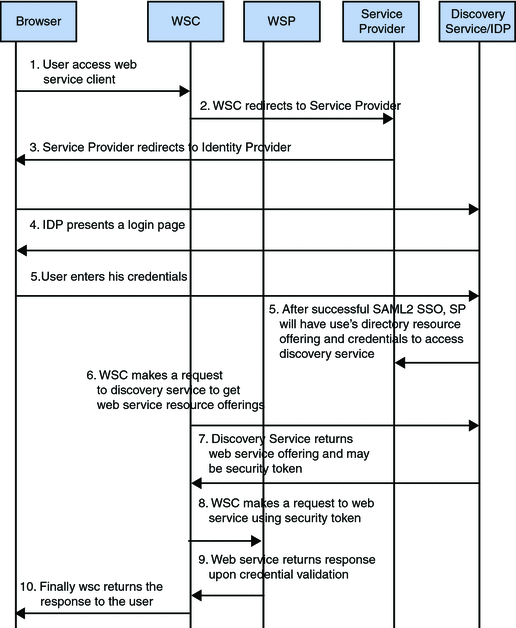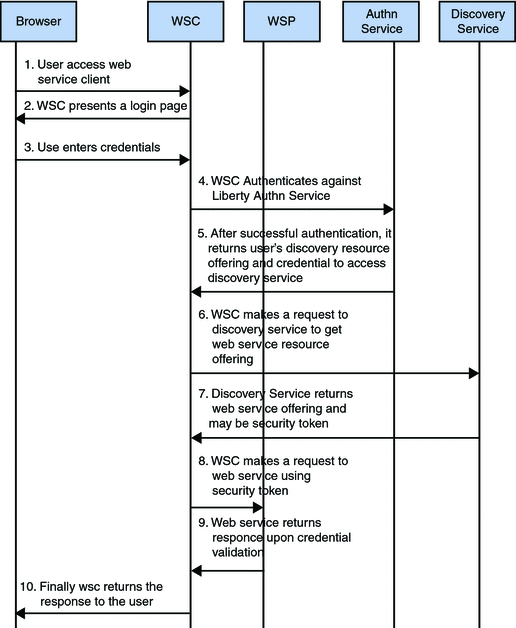Using the Web Services Stack
The Web Services Stack authenticates the user and obtains bootstrapping information for the requested application. For client applications accessed from a desktop, the user can be authenticated using the Authentication Web Service. (For example, a Java® Swing client application can authenticate the user, obtain profile data, and pass it on for online transactions.) For browser-based applications, the user can be authenticated using the SAML v2 single sign-on profiles or Liberty ID-FF. The following sections describe how the Web Services Stack can be implemented.
For more information on configuring the Web Services Stack, see Chapter 9, Implementing Web Services, in Sun OpenSSO Enterprise 8.0 Developer’s Guide and Chapter 9, Identity Web Services, in Sun OpenSSO Enterprise 8.0 Administration Guide.
With SAML v2 or Liberty ID-FF
OpenSSO Enterprise can be a deployed as a service provider or an identity provider and provide identity authentication using the SAML v2 or Liberty ID-FF protocols, implemented by the Federation Services, to bootstrap into the Web Services Stack framework. The SAML v2 process is illustrated in Figure 12–4.
Figure 12–4 Web Services Stack Using SAML v2

With the Authentication Web Service
OpenSSO Enterprise can also provide identity authentication using the Authentication Web Service to bootstrap into the Web Services Stack framework. This process is illustrated in Figure 12–5.
Figure 12–5 Web Services Stack Using Authentication Web Service

- © 2010, Oracle Corporation and/or its affiliates
